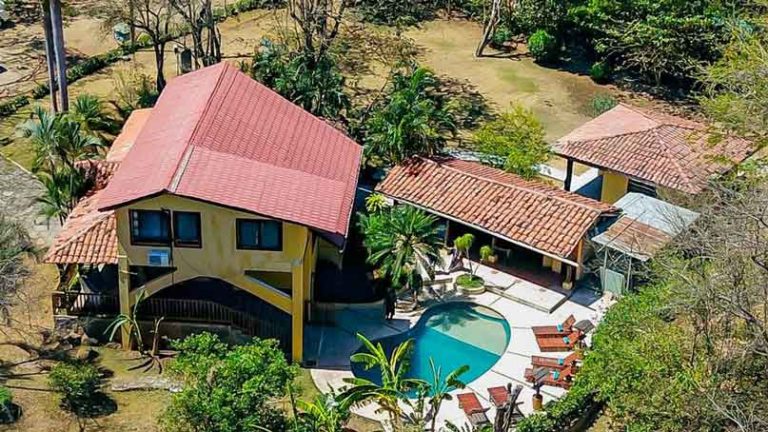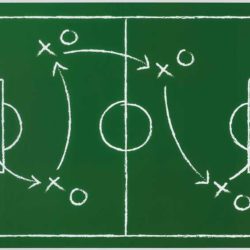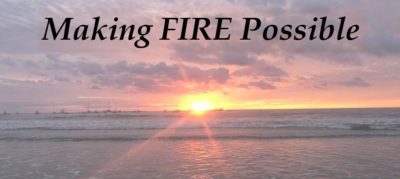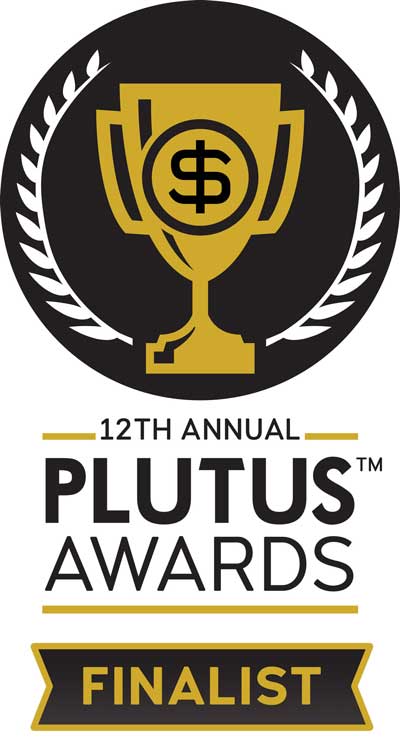Some of the links in this post are affiliate links. We may receive compensation if you click one of those links and purchase a product.
We purchased our second investment in Costa Rica, Casa Salita, using our retirement money. Up until a few years ago when I seriously started researching real estate investing, I only thought of paper assets like stocks and mutual funds when considering where to invest my 401k and IRA contributions.
I had no idea you could invest retirement dollars in anything else.
In fact, for most people who work a traditional 9-5 job, you like cannot invest in anything but paper assets since your company’s retirement plan probably sits with an institutional investment company like Vanguard, Fidelity, or T. Rowe Price, and as long as you remain in that company, you likely can only make paper asset investments.
However, if you have earned income or retirement money to roll over from other plans, or you change to a new employer and your retirement funds from your prior employer have vested, you can open a self-directed retirement account, which gives you much more flexibility in what you can invest in.
Ways to self-invest your retirement dollars
Traditional Self Directed IRA
With a traditional self-directed IRA, you open an account with a third-party custodian, who acts as an intermediary on all of your investments, ensuring the investments don’t run afoul of IRS regulations, and ensuring all of the necessary paperwork is in order. The custodian is the one to sign all of the paperwork, so you have to work within their procedures and timelines.
Nerdwallet has a good summary of how traditional self-directed IRA’s work and weigh out the advantages and risks. Caroline and I have both had self-directed IRA accounts, and while they make the investment process fairly simple, they can also be very slow to process transactions, have high fees, and prohibit certain types of transactions you want to do, such as international real estate investments.
Checkbook Control Self Directed IRA or LLC IRA
Alternative to having a third-party custodian be the intermediary of your specific IRA investments, you can open what is known as an IRA LLC, also know as an IRA with checkbook control.
For this model, in addition to the IRA, an LLC is created, to be owned by the IRA. The IRA has a custodian, but it is the LLC that is making individual investments, and also has a bank account. You (or any designee you desire) are then named as manager of the LLC, which means that you are in control of the individual investments that are made by the LLC, and sign the paperwork and make the payments, rather than the custodian of the IRA acting as intermediary.
Since the LLC has a bank account, you have the flexibility to make individual payments for your investments as necessary. The custodian will charge a nominal annual fee for maintaining the IRA, and so the fees are much less than a traditional self-directed IRA, but you are taking on the additional responsibility of making sure the paperwork is all in order and that the investments being made are all legal.
Solo 401(k)
The final alternative is the Solo 401(k). This model is only available to people who have their own business and no employees. The Solo 401(k) provides even more flexibility than the self-directed IRA in that it has higher contribution limits, and allows you to combine your funds with your spouse’s funds to make joint investments.
A 401(k) trust is created, which is the entity that will own your investments. A bank account is also created in the name of the trust. Then, just as in the IRA LLC, you would sign on the paperwork, make any payments, and also have the responsibility to ensure investments are all proper and legal, and to manage all of the paperwork and transaction detail.
We opted for a Solo 401(k)
We each had a traditional self-directed IRA previously, but we found that using the third-party custodian led to additional time, effort, and fees. Also, we ran into limitations put in place, specifically that we could not make international real estate investments. Since we had made several investments going the traditional IRA route, we felt we had enough experience to act as manager and trustee of our own investments.
Since Caroline and I are 50/50 managing members of our own LLC, the Solo 401(k) option was available to us, and we decided to go with the Solo 401(k) over the IRA LLC, mainly because it allowed us to jointly combine our resources and make joint investments.
So far, we’ve had a great experience with our Solo 401(k). It was very easy to get set up with the broker we picked, and the broker was very patient with all of our questions, and took a lot of time to outline the differences between the IRA and Solo 401(k) so that we could make an informed decision about which way to go.
Self-directed retirement accounts have costs you need to consider
Research time and effort
It’s not easy to get information on self-directed accounts. I first heard about it via real estate networking circles. To get my questions answered, I needed to look at real estate forums, interview several self-directed retirement account service providers, and do my own digging through published sources.
You need to want this information because it’s not broadly shared. (I’m sure the big investment firms don’t want to lose all of those retirement assets under management!)
Set-up and ongoing fees
We paid $1,400 to set up the Solo 401(k) paperwork. We used Checkbook IRA for the set-up – they have a lot of free resources on their site, were incredibly thorough during the set-up process, and have continued to be helpful as questions arise. We also looked at Sense Financial, and I thought this firm also provided good information and responsiveness. You should shop around for who you feel comfortable working with.
In addition to the set-up fees, our accountant will need to file an annual form, Form 5500, so this will be an extra step during tax time.
Loss of tax advantages, such as depreciation and interest deductions
Real estate provides tax advantages that you lose when buying in your already tax-advantaged account. While you can take on mortgage debt for real estate investments done with your self-directed retirement account, you need a different type of loan (non-recourse) which is only offered by certain companies. This type of loan comes with additional tax consequences, so you’ll need to budget for that with your accountant.
Since you’re not offsetting expenses in your retirement account to your income, you’re not benefiting from mortgage interest deductions along the way.
Real estate investments also allow for depreciation to offset your taxable income, and you lose this benefit with real estate in your retirement account because you’re not filing ongoing income and expenses for your retirement assets. You just pay taxes when you pull the money out.
You can’t use the property personally
There are strict rules with what can and can’t be done with your retirement assets. In the case of real estate investments, you can never use them personally or allow friends and family to benefit – all transactions need to be arms-length.
This means that you can’t buy a vacation property and use it yourself, even if you mostly rent it out. Do not use your self-directed retirement account to buy a property you want to use because you can’t use it.
For us, the benefits of using a self-directed retirement account outweighed the costs
This is where our money already is
We got serious about real estate pretty late into our corporate careers. We had 20 years of traditional employment with traditional retirement plans, so that’s where our savings were.
If we wanted to do more in real estate, we’d either have to wait to save enough non-retirement money or tap into the retirement money already there.
High tax rates mean this is where our money will continue to be
Not only is money from previous years of working invested in retirement accounts, but our current excess earnings continue to be funneled into retirement accounts. High tax rates mean that every dollar we can put away pre-tax saves quite a bit.
When I see how much retirement contributions lower our tax bill, I make that additional retirement contribution, even when we already have so much more in our retirement account than our non-retirement account.
Using our retirement money outright keeps carrying costs low
By tapping our retirement assets, we are able to buy properties outright with no mortgage. No mortgage means no chance that we’ll miss a mortgage payment and have our property taken back by the lender. No mortgage payment keeps our monthly carrying costs low, especially in Costa Rica, where property taxes are minuscule (a quarter of one percent of the purchase price), and insurance and utilities are reasonable.
Low carrying costs mean more profits flowing back into the retirement account, building up reserves and a fund to buy more property if we choose.
401(k) structure enables us to pool our money
The self-directed Solo 401(k) structure in particular (as opposed to a self-directed IRA LLC) allows us to pool our retirement money and invest together. As mentioned, to take advantage of this, you will need to have a company with no employees (and show a profit) to select this option, but now you have yet another reason to start a side hustle.
=====
It takes some research and effort to buy real estate using your retirement assets, but many others are already doing it.
Making the effort upfront has allowed us much more flexibility in our investing decisions and specifically allowed us to jump on an international real estate investment that we’re excited about and that we wouldn’t have been able to finance in any other way.
=====
Check out Checkbook IRA to learn more about check book IRA’s and Solo 401(k)’s. If you sign up on their site, you will receive their free check book IRA and Solo 401(k) roadmap. As an affiliate of Checkbook IRA, we may also receive compensation if you purchase their product.
=====
This post is part of a series on the purchase of our 2nd property in Costa Rica:
- Why We Timed Two Investments So Close Together
- Why This Rental Property Is Worth More Than Just The Rents
- Using A Self-Directed Retirement Account To Buy Real Estate (current post)


 We are Scott and Caroline, 50-somethings who spent the first 20+ years of our adult lives in New York City, working traditional careers and raising 2 kids. We left full-time work in our mid-40’s for location-independent, part-time consulting projects and real estate investing, in order to create a more flexible and travel-centric lifestyle.
We are Scott and Caroline, 50-somethings who spent the first 20+ years of our adult lives in New York City, working traditional careers and raising 2 kids. We left full-time work in our mid-40’s for location-independent, part-time consulting projects and real estate investing, in order to create a more flexible and travel-centric lifestyle.  Financial independence and early retirement is not something we originally focused on, but over time realized it was possible. Our free report,
Financial independence and early retirement is not something we originally focused on, but over time realized it was possible. Our free report, 







